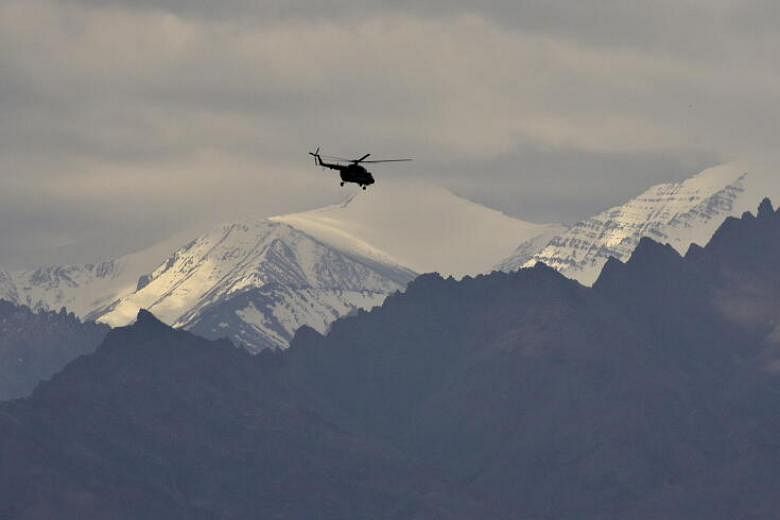NEW DELHI - India and China have agreed on broad strokes to disengage from the Ladakh region of the Line of Actual Control (LAC).
But Indian analysts warned that the step-by-step disengagement, not expected to be carried out speedily, remained a complicated effort with potential for a sudden flare-up.
India and China, at a meeting of Corps Commanders on Monday, agreed to disengage though details are yet to be worked out. But the disengagement is complicated by competing territorial claims in Galwan Valley.
Analysts said India had to stand its ground in negotiations and maintain its position of status quo from before May amid claims by China over the Galwan Valley.
"It's just a beginning and we have to play our cards well. We have to insist on our stand which is that the status quo ante must be restored and additional fortifications removed," said Mr Manmohan Bahadur, Air Vice-Marshal (Retired).
"The media reports say there are structures, which are overlooking our position, at Pangong Tso. These need to be removed. Then only will things be OK."
On Wednesday, the two countries held diplomatic talks via video conference to explore ways of reducing tensions along the border. The talks were led by mid-level diplomats under the Working Mechanism for Consultation and Coordination on India-China border talks.
The worst border clash in over four decades erupted as troops were supposed to be disengaging from their positions in Galwan Valley, which is high in the Himalayas.
A violent clash on June 15, just nine days after both sides decided to disengage, took place where Indian soldiers had gone to remove a tent, which India said had violated the agreement and was on India's side of the LAC. China has said the incident occurred on its side of the LAC and accused India of illegally putting up structures.
Twenty Indian soldiers and an unknown number of Chinese soldiers were killed, resulting in this section of the border now becoming volatile.
The simmering border row between India and China is a result of several differences along the LAC.
Within India, distrust is now running high against China amid much speculation about Beijing's intentions in igniting tensions along a part of the border that has largely remained trouble-free since the two countries went to war in 1962.
The border row with China has also dominated social media trends in India, from #BoycottChina and #BoycottChineseProducts, and mobilised public opinion against China.
Many analysts believe the tensions have been sparked off by India upgrading its infrastructure along the border and building feeder roads from Daulat Beg Oldi, an all-weather road near the LAC.
"China welcomes agreement to "cool down border situation", but is simultaneously engaged in the biggest military buildup on the Indian border - and not just in eastern Ladakh - since 1962," tweeted defence analyst Ajai Shukla.
On Wednesday, India's army chief, General Manoj Mukund Naravane, visited forward areas in Eastern Ladakh.
Reports also suggested that troop strength remained high on the Indian side.
An AFP report from Leh quoted residents as saying long lines of military trucks and artillery were moving on roads near Leh.
Professor Srikanth Kondapalli, a professor in Chinese studies at Jawaharlal Nehru University, noted that a disengagement required both sides agreeing to take down structures.
"They have to dismantle structures like tents. That's a process that will take time. Disengagement and de-escalation would then mean a series of meetings at the local commander level," he said.
"If you are disengaging, people should go home with a skeletal military presence, meaning a few troops at vantage points. On the other hand, we are seeing a large number of troops."


